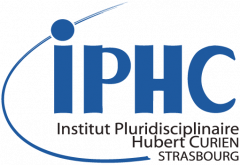Speakers: Marek Levitowicz
The Nuclear Physics European Collaboration Committee (NuPECC) [1] hosted by the Euro-pean Science Foundation represents today a large nuclear physics community from twenty threecountries, three ESFRI (European Strategy Forum for Research Infrastructures) nuclear physics in-frastructures and ECT* (European Centre for Theoretical Studies in Nuclear Physics and RelatedAreas), as well as from four associated members and ten observers. One of the major objectivesof the Committee is: » …on a regular basis, the Committee shall organise a consultation of thecommunity leading to the definition and publication of a Long Range Plan (LRP) of Europeannuclear physics. » .To this aim, NuPECC launched the preparation for the new LRP in May 2022 [2]. The bottom-up approach to the LRP, was strengthened by launching an open call for input. The received 159contributions, submitted by more than 400 individual scientists, collaborations, research infrastruc-tures, and institutions in Europe composed a solid basis for the further analysis and elaboration ofthe LRP by 11 Thematic Working Groups (TWG). The TWG covered a large set of topics relevantto the development of nuclear physics namely, Hadron Physics Properties of Strongly InteractingMatter at Extreme Conditions of Temperature and Baryon Number Density, Nuclear Structureand Reaction Dynamics, Nuclear Astrophysics, Symmetries and Fundamental Interactions, Ap-plications and Societal Benefits, Research Infrastructures, Nuclear Physics Tools – Detectors andExperimental Techniques, Nuclear Physics Tools – Machine Learning, Artificial Intelligence, andQuantum Computing, Open Science and Data and Nuclear Science – People and Society.Two working meetings were held at GSI/FAIR in Darmstadt, Germany in October 2023 andin February 2024. The purpose of the first meeting was to draft the LRP recommendations, andthe second meeting was dedicated to finalizing the LRP chapters. A draft of the full LRP2024was presented and discussed with the nuclear physics community at a dedicated three-day TownMeeting in Bucharest, Romania in April 2024. The more than 300-page LRP 2024 documentincluding recommendations of the LRP was approved by NuPECC at its meeting in June 2024 inLund, Sweden.The Executive Summary of the LRP2024 can be found at [3].The presentation will focus on the findings and recommendations of the NuPECC LRP2024.References[1] https : //nupecc.org .[2] https : //nupecc.org/?display = lrp2024/main .[3] https : //www.nupecc.org/lrp2024/Draf t_Executive_Summary_LRP 2024.pd
https://indico.in2p3.fr/event/33799/
Début : 07/11/2024 à 10:00
Fin : 07/11/2024 à 12:00
Prochains évènements
Retour à l'agendaSeminaire DRS: DAMIC-M / skipper CCD
Speakers: Xavier Bertou (IJCLab) https://indico.in2p3.fr/event/38024/
Belle II International Masterclasses 2026 (Strasbourg, France)
Quizz : https://belle2.ijs.si/masterclass/quiz.php Vidéos pédagogiques : L'expérience Belle II (8', en Anglais) : http://www1.phys.vt.edu/~piilonen/movies/KEK_eng_short_1029.mp4 One day with a particle physicist (30', en Anglais) : https://www.youtube.com/watch?v=e0Lv2GrsXig&feature=youtu.be Tour of the Belle II experiment (10', en Anglais) : https://istnazfisnucl-my.sharepoint.com/:v:/g/personal/forti_infn_it/EdXqH1QSVjdLnBD8pIiAJL0BPc3eD4dpxuyi8XhgxLbb2Q Display de collisions de Belle II : https://evdisp.belle2.org/ Quelques photos des Masterclasses Belle II 2023 : https://seafile.unistra.fr/d/42b467a0dbae4d40b193/ https://seafile.unistra.fr/d/42b467a0dbae4d40b193/ https://indico.in2p3.fr/event/37591/
